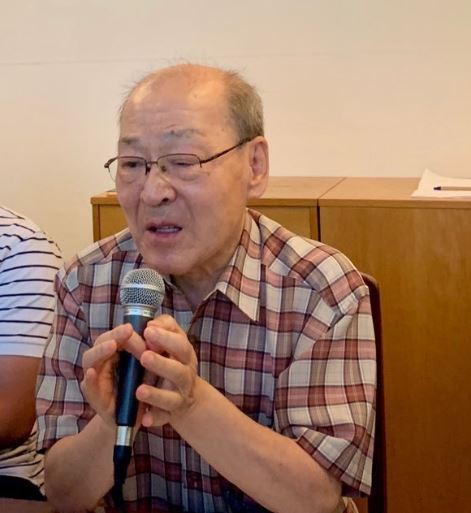National Museum of Korean Literature to be more than repository of books
By Im Eun-byelPublished : July 24, 2019 - 16:13
The National Museum of Korean Literature aims to function as a culture complex for the public, allowing readers to enjoy Korean literature in diverse forms.
The museum has taken the first step toward its launch, as the founding committee was registered as a corporation earlier this year. The museum will be built in the Eunpyeong district of western Seoul. Construction of the museum will begin in October 2021, with the opening date slated for December 2023.
“The need to build a proper museum for Korean literature has always been there, but it has not been realized for a long time,” Yeom Mu-ung, a literary critic who was named head of the institution, said at a press event in central Seoul, Wednesday.
The museum has taken the first step toward its launch, as the founding committee was registered as a corporation earlier this year. The museum will be built in the Eunpyeong district of western Seoul. Construction of the museum will begin in October 2021, with the opening date slated for December 2023.
“The need to build a proper museum for Korean literature has always been there, but it has not been realized for a long time,” Yeom Mu-ung, a literary critic who was named head of the institution, said at a press event in central Seoul, Wednesday.

Yeom, whose tenure runs for three years, argues a literature museum should be supported by the state, but managed by individuals, citing examples of similar museums in other countries that he has visited.
At the National Museum of Modern Chinese Literature in Beijing, Yeom thought that the state museum was heavily nationalistic. He argued that deep nationalism may be inappropriate when it comes to sharing the universal values of literature.
On Japanese literature museums, operated by individuals, he said the institutions lacked totality and seemed to be an extension of a hobby and the personal interest of individual writers.
“The National Museum of Korean Literature should reflect on the history of colonization, division, war, industrialization and democratization. But (emotions) should not be forced upon the next generation. There needs to be a balance,” he said.
The center currently has around 73,050 items related to Korean literature, including books and belongings of writers. Among them, 54,892 pieces were donated by literature collector Ha Dong-ho. The pieces are currently kept in storage at the National Library of Korea, Sejong.
A budget of 2.5 billion won ($2.12 million) has been appropriated for the archive of Korean literature at the museum. However, that may not be enough. Prices are going up, Yeom said, as the museum looks into purchasing first-edition copies.
Yeom called for donations from writers, critics, scholars and the families of writers.
The museum has various missions, including on setting the boundaries of Korean literature, works of the Korean diaspora, translations of Korean work and popular literature.
Concerning the works of pro-Japanese writers during the colonial period, Yeom said the museum would include works regardless of the political inclination of the writer.
The museum hopes to develop into a cultural complex, allowing visitors to enjoy diverse contents related to literature. For instance, the museum’s auditorium will function as a venue for performances related to Korean literature.
The institution also asserted the need to digitize data. It will make digital copies of works and preserve them for future research. It hopes to open up a digital library before the official launch of the library.
“People do not read much these days, enjoying contents shared online. I wonder what we can do to make literature more approachable (to a wider public),” Yeom said.
“A literature museum should collect materials, preserve them and pass them on to the next generation, all the while sharing the information with readers in diverse ways.”
By Im Eun-byel (silverstar@heraldcorp.com)








![[KH Explains] How should Korea adjust its trade defenses against Chinese EVs?](http://res.heraldm.com/phpwas/restmb_idxmake.php?idx=644&simg=/content/image/2024/04/15/20240415050562_0.jpg&u=20240415144419)











![[Today’s K-pop] Stray Kids to return soon: report](http://res.heraldm.com/phpwas/restmb_idxmake.php?idx=642&simg=/content/image/2024/04/16/20240416050713_0.jpg&u=)